A New Study
I like to say to myself “If you live long enough, you’ll see it all.” I have now lived long enough to see a second MHI effort to do “major consumer research” to “profile the housing needs and opportunities for the industry among various underserved homebuyers.” Who can forget the first effort?
Jeepers, I have no heart burn with the stated goal and direction of this initiative. I think it possibly worthwhile, furthermore, we already have experience along this trail. In the early 2000’s Drucker Worldwide, who is conducting the current study, was replaced by Roper International, in the first effort. If the stated goals at that time were somewhat different, what was not different was the goal of gathering information by a consulting firm, Roper, create a report, then present a possible campaign to increase manufactured housing sales. Sounds good, right?”
The Roper study was to be the linchpin for an industry image campaign. Surely that was badly needed at that time, and still is. What remains to be seen is whether the course of this initiative ends differently than the Roper effort, which ended badly.
Timetable
According to the study timetable set forth by Dick Jennison, MHI President, it will be a multi-step process; the study first, then present the research results to the members of MHI to determine “its next step is late-summer” (2017). I must say that all sounds logical, practical and well-conceived, and very Roper-ish. So far, OK.

For those of you out of swaddling clothes by the year 2000, the new study must send a chill down your spine and some involved in the Roper study, like me, might say a few more things. There might even be a question or two.
Again??
First of all, quoting Yogi, this all seems like déjà vu all over again. Others might say, we sure had a fun time the last time we did a study but will the result be different this time? Some skeptics might ask, what has changed so much in the 10-12 years since the Roper study was concluded? Finally, is the initiative once again the springboard to the fabled “Industry Image Campaign,” or headed to something else? One wonders.
In view of the history on this thing, it is logical to be skeptical of the entire process.
I was very much involved in the Roper effort, which died an ignoble death, dealt a crushing blow to the industry (from which it hasn’t recovered), supposedly couldn’t be afforded financially then, and the industry condition seems even weaker now.
I would question, what is the goal of the initiative in terms of advancing the stated aim? After all, when you find out from the public that the MH industry is the least liked industry Roper ever studied, where do you go from there? And, what has changed since Roper reported these facts to MHI membership?
- Have fewer communities closed since Roper, putting their residents on the street?
- Have rent increases in communities been muted?
- Has financing the home purchase become easier since Roper time?
- Have loan interest rates decreased substantially on new MH home purchases?
- Does the news media paint any glowing MH articles other than the standard “man have you seen those new trailers lately? They are gorgeous!” I’ve been observing that one since 1972, with little positive response form the buying public, except during periods of loose/defective retail financing. Too many sure went wild with that one.
Remind the swaddling-clothes-set that the last industry top in 1998, which saw 373,000 HUD Code homes emerge from our factories, led to the present incapacitated condition of the industry. Heavy defaults erupted thereafter, leading to the disastrous industry meltdown which saw many portfolios lose all value.
It wasn’t covered in “The Big Short,” but bankers/lenders and government regulators paid scant attention to the MH debacle which could easily have predicted the lender use of the MH lending style on site-built single family homes was likely to create the same result as that which occurred with those highly distressed HUD Code portfolios. Oh, mama!
Yes, the results were similar in site-built mortgages, EXCEPT, that lending there is so much greater in volume that the only similarity was in the results.
MH Ugly and No Apology
Repossessed homes, financial distress, broken families, children leaving their familiar school, moving in with relatives or to a homeless shelter, loss of home, and huge, and I mean huge lender/investor/government losses. No one paid attention to the MH meltdown, and too little was learned little from it. And no one apologized.
MHI has a mission to assist the MH industry to prosper. Growth is certainly a key component of that mission, and if we are in a slight upward hump in sales now, in comparison to our pre-1998 performance, we are but a shadow of our former selves, down by 75% or so.
So why am I bothering to write this piece when my MH activity today is almost exclusively as an expert witness for law suits? I’m asking myself the same. But, I greatly fear we are in a glide path to Roperville II, the study-hard, but no-action paradigm of the last effort and various other MHI efforts.
Again, note that all the Task Force initiative participants, save two, are from homebuilders, again similar to the Roper event. After all, having spent the money on the Roper study, when it came time to pony up the $17.00 to be added to each home section’s invoice built at that time, there was no buy-in from the builders. To this day I wonder how the builders thought MHI was going to fund any image campaign if most of the money was not coming from a fee added to each home section’s invoice.
And so when the builders didn’t bite, or at least most of the important ones didn’t, the entire Roper effort fell flat on its face. Great and expensive dog food, but when put down, no dogs ate it.
My Roper stuff went into hibernation in my stand alone hard drive, and there it sits, lonely, still wondering whether it could have done for us what the RV guys and gals accomplished with their GoRVing image campaign. During the Roper initiative, we had a large joint meeting with the RVers, and they recommended we move forward in the quickest term, with our image campaign. The RVers all said they’d be on their asses had they not moved forward. As an industry, we are a little thin on accepting good advice.
Right Course/Wrong Course
In my mind, MHI, for which I worked very hard for 20 years to advance industry healthy, seems under attack lately. Further, they continue to posit that the health and growth of the industry lies primarily in hat-in-hand visits to various government divisions. The Duty to Serve/GSE initiate seems for the moment the Holy Grail for the industry. A great deal of time and effort has been directed there. At least the current Drucker Study is away from that direction, and for that I think it makes sense on some level.
Parenthetically, I might suggest MHI spend a great deal more time and effort in pushing the Section 8 program to help individuals to buy their HUDs. I have believed this for years, ever since a very highly placed GSE person said at one of my industry meetings, “The industry needs to find a way to help so many of your financially fragile clients buy their MH with government help.” After all, why pay Section 8 to rent a rat crap apartment, when instead these same folks could buy their shiny, new MH with Section 8 help. How much better than an apartment rental is that? A lot.
Task Force
Some industry builders in the Drucker Study are people known to me. I like them and they are intelligent folks. But, one concept that emerged from Roper is a deep seated belief in the industry that you don’t do anything to help your competition, even if it might help you. And it was obvious in the Roper effort that the “don’t help competition” was alive and well in the final decision to let Roper die peacefully. And some held that adding even an extra dollar to the invoice could destroy the industry!
I strongly suggest that as this effort proceeds forward, if it does, MHI determine two things quickly:
- Are builders willing to take important actions to help the industry as a whole even if their competitors will benefit?
- How will this be financed and paid for should it move forward?
I know Mr. Jennison wants to show the MHI membership he is taking bold moves to help the industry, especially as he seems somewhat under attack recently. But the last time the Roper Study cost some $250,000.00, or thereabouts. Money the industry didn’t have. How much will be spent now, and where is it coming from?
I want to avoid seeming negative on this whole Drucker thing, but that is the problem with old age. When young and I saw a ball bearing rolling across a table I wondered whether it would hit the ceiling, walls or floor. I didn’t know then. Well, the ball bearing always hits the floor, I know that now.
Please, please
A final plea to MHI. The Roper initiative saw a final meeting where Roper presented some thoughts on the direction of the proposed media campaign, with actual T.V. ads. This is what Roper did for a living. Not infallible, but still they are the experts.
The meeting descended into enumerable people complaining loudly about the projected ads. They had far better ideas! Individuals who spent lots of time widening their asses seated in lender’s chairs and others who spent their days walking dusty lots in white shoes and gold chains at sales locations suddenly became Doyle Dane and Bernbach, the international advertising network.
Please, please, if you get to the point that some sort of campaign is warranted to move forward, do not allow a room of 200 people screaming at the proposal. Keep it in a tight group, such as the task force. Let them make the decision. Democracy is not a good application to this process. It needs benevolent dictators. ##
 By Marty Lavin, JD.
By Marty Lavin, JD.
350 Main Street
BURLINGTON, VT 05401
att’y, consultant, & expert witness
only in factory built housing







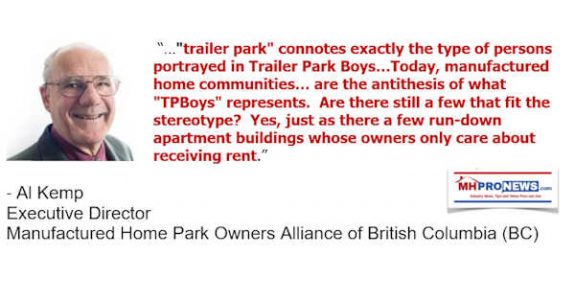
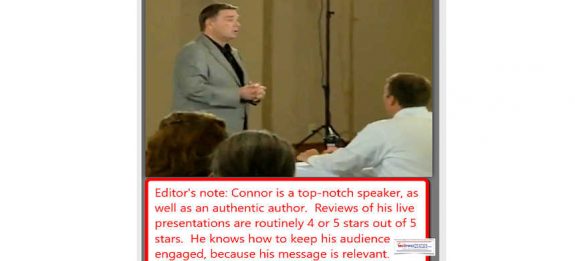




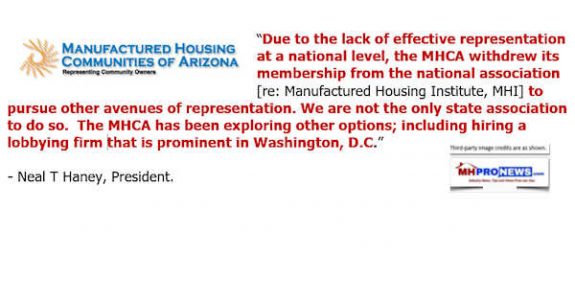

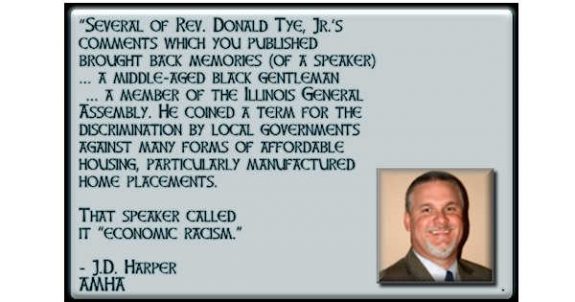


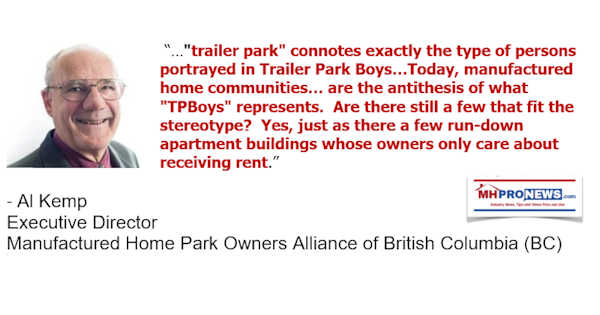
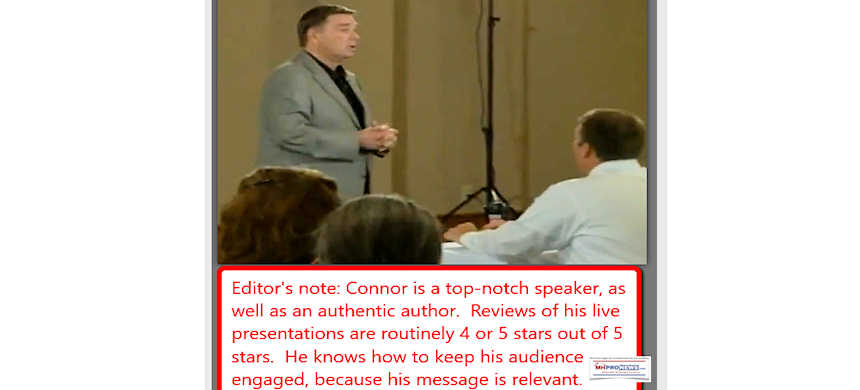


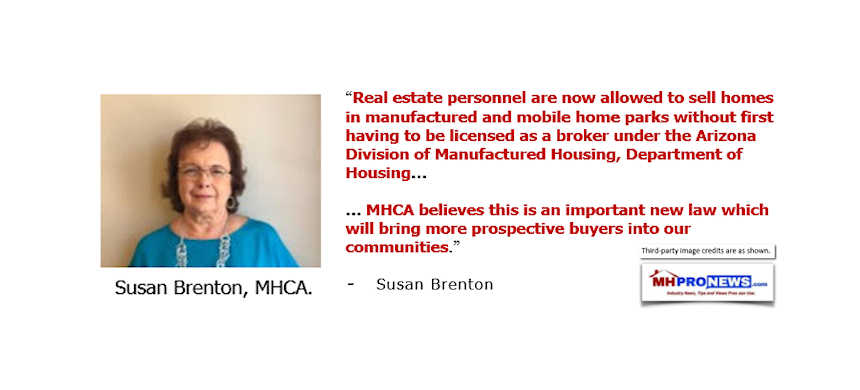

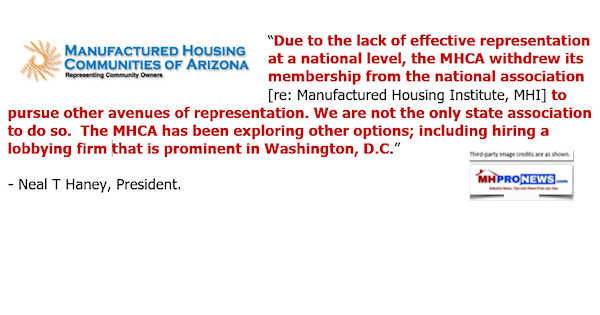

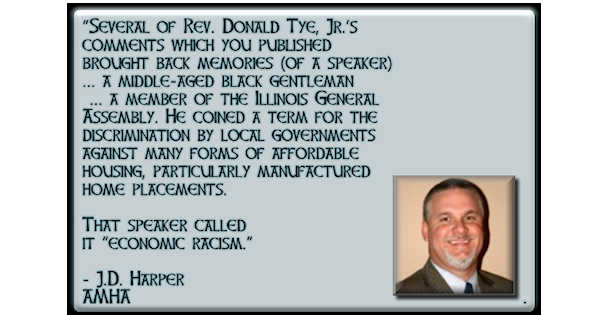
Karl Radde – TMHA, MHI, Southern Comfort Homes – Addressing Bryan City Leaders, Letter on Proposed Manufactured Home Ban
To All Concerned [Bryan City Officials, Others]: As the retail location referenced by Mr. Inderman, I would like to take a moment to address the …